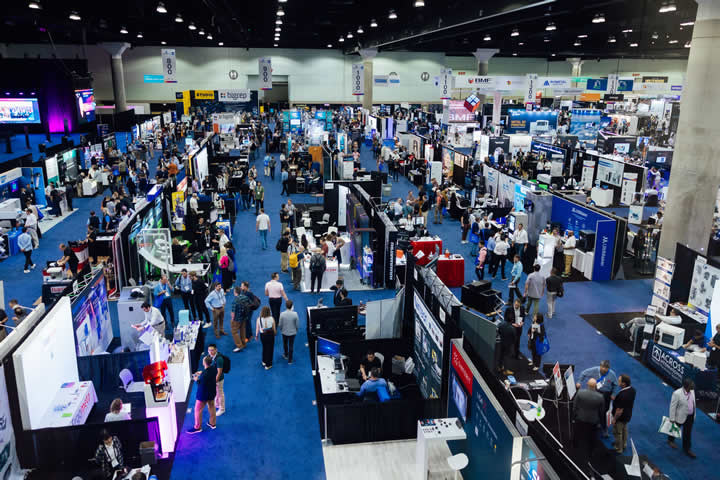Unlocking the Benefits of Additive Manufacturing
.jpg)
Following years of evolution and refinement, industrial 3D printing is advancing beyond its early applications in product design and prototyping to facilitate production at scale. A recent study by Formlabs found that over 60% of new adopters are now leveraging the technology to fabricate end-use parts.
As new tools emerge and innovative processes are developed, an increasing number of companies are recognizing the benefits of additive manufacturing (AM) across all stages of the production cycle.
Despite its potential, industrial 3D printing remains a relatively niche technology. In 2022, the global AM market was valued at approximately $16.69 billion, representing a small portion of the overall manufacturing market. Nevertheless, the technology is primed for broader adoption. To fully leverage its potential, manufacturers need to understand when and how to integrate it into their operations.
Cutting Lead Times, Reducing Waste
Industrial 3D printing offers the potential for production to take place closer to the final point of use, reducing the need for complex and lengthy supply chains. In addition, the process is typically faster than traditional methods such as forging and casting, leading to significantly shorter lead times.
For example, the U.S. Navy has made major investments in additive technologies to tackle the delay in vessel construction caused by the shortage of sequence-critical material parts. Experts estimate that AM could cut production time for these parts by up to 90% and boost capacity by 15% to 20%.
Manufacturers are increasingly turning to additive technologies to address waste reduction concerns. The U.S. Department of Energy estimates that AM could reduce waste and material costs by as much as 90% and decrease energy consumption by 50% compared to traditional manufacturing methods.
Businesses that heavily utilize additive methods can often transition to a print-on-demand model, reducing the need for large inventories and minimizing shipping logistics. Furthermore, 3D printing is advantageous because it does not require additional supporting parts like molds and tooling, resulting in decreased material waste. In a recent survey by Sculpteo, 94% of participants said they considered the technology sustainable. The top-cited benefits included localized production (57%), on-demand manufacturing (61%), and the reduction of resources through enhanced design flexibility (47%).

Playing to Additive's Strengths
Although additive manufacturing (AM) offers numerous benefits, it is not a one-size-fits-all solution for every industry and application. Cost can be a major deterrent, as the initial investment required for AM technology is substantial. Additionally, some sectors have faced challenges in integrating AM into their existing workflows and fully capitalizing on its potential. Currently, the sectors that have achieved the highest levels of adoption are those that play to AM's unique strengths.
The dental industry, for example, relies heavily on personalized production to create custom-fit dental devices like mouthguards and dentures tailored to an individual patient's anatomy. As a result, 3D printing is now widely used in dental laboratories, and a growing number of dental practitioners use the technology in their offices.
Sectors like aerospace, defense, and energy — all of which rely on advanced hardware and high-performance materials — have also found that industrial 3D printing can enhance their production processes and product capabilities.
Take, for example, Siemens Energy, which recently collaborated with FasTech Engineering to build a gas turbine component using wire arc additive manufacturing (WAAM). By leveraging WAAM, the company was able to produce a large-scale resonator ring while reducing manufacturing time and cost by 66% and 25%, respectively, a process discussed greatly at the RAPID + TCT conference.
Building a Roadmap for Adoption
As AM gains traction, there is a rise in awareness about the technology. However, numerous manufacturing leaders remain uncertain whether or how AM fits within their business model. For entities interested in adopting industrial 3D printing, evaluating how their products and processes align with the technology's strengths is essential. AM particularly shines in high-mix, low-volume (HMLV) scenarios and use cases that require advanced materials and complex geometries.
For those who are new to the technology, it is important to start with education. By developing an understanding of the materials, applications, and techniques available in industrial 3D printing, manufacturing leaders can better envision how the technology can integrate into their existing ecosystem.
Next, it is important to assess their current processes and identify the areas where AM could add value. Initially, these opportunities may be limited to certain stages of production, such as rapid prototyping. Engaging a 3D printing service provider can be a valuable resource at this stage, as it allows companies to leverage external expertise, specialized equipment, and knowledge without heavy upfront investments.
Finally, it is crucial for manufacturers to adapt to the constantly evolving industry landscape. By keeping up-to-date with the latest trends through publications, research, and conferences, professionals can position themselves to seize the opportunities that arise from new processes, materials, and technologies. This will allow them to capitalize on the capabilities that most benefit their business model, fostering sustainable growth for their organization.
.jpg) Olga "Dr. O" Ivanova, Ph.D., is the director of technology at Mechnano. A researcher with more than 10 years of experience in AM, she leads the development of novel formulations and identifies process improvements to satisfy customer requirements. Ivanova is an event advisor for RAPID + TCT 2024 and the 2025 event in Detroit.
Olga "Dr. O" Ivanova, Ph.D., is the director of technology at Mechnano. A researcher with more than 10 years of experience in AM, she leads the development of novel formulations and identifies process improvements to satisfy customer requirements. Ivanova is an event advisor for RAPID + TCT 2024 and the 2025 event in Detroit.
Comments (0)
This post does not have any comments. Be the first to leave a comment below.
Featured Product

